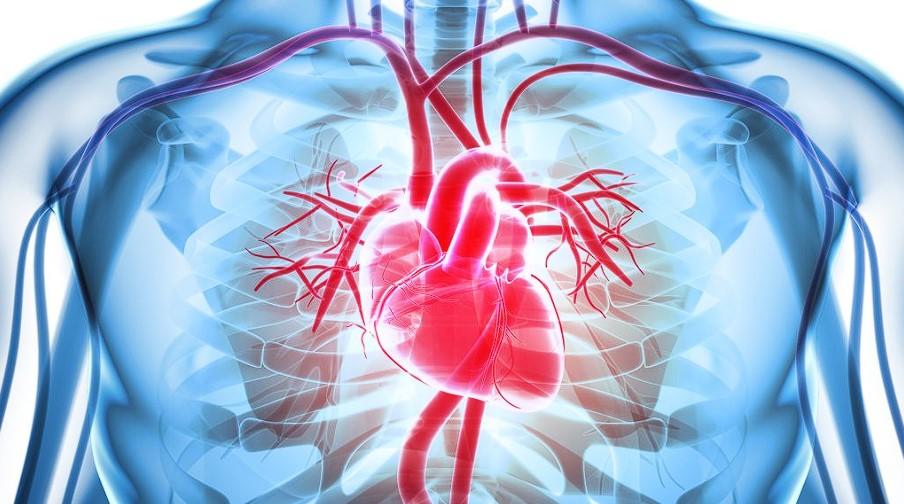Heart failure (HF) is a complex clinical syndrome that results from structural or functional impairment of the heart’s ability to pump blood efficiently to meet the body’s demands. Understanding the stages of heart failure is crucial for early detection, appropriate management, and improving patient outcomes. As a cardiologist specializing in arrhythmias, exploring these stages provides insight into the progressive nature of HF and underscores the importance of tailored treatment strategies.
What Are The Different Stages of Heart Failure?
Several classification systems exist to categorize heart failure based on severity, prognosis, and treatment implications. The most widely used staging system is the American College of Cardiology/American Heart Association (ACC/AHA) staging system, which divides heart failure into stages A through D:
SEE ALSO: What Are The Signs of A Failed Heart Valve Replacement?
Stage A: At High Risk for Heart Failure
Stage A identifies individuals at high risk for developing heart failure but without structural heart disease or symptoms.
This group includes individuals with hypertension, diabetes mellitus, coronary artery disease, obesity, or a family history of cardiomyopathy. Prevention and management strategies focus on addressing risk factors to reduce the likelihood of developing symptomatic heart failure.
Stage B: Structural Heart Disease Without Symptoms
Stage B denotes the presence of structural heart disease (e.g., left ventricular hypertrophy, asymptomatic valvular disease) but without signs or symptoms of heart failure. Patients in this stage may benefit from interventions aimed at preventing progression to symptomatic heart failure, such as aggressive blood pressure control, lipid management, and lifestyle modifications.
Stage C: Symptomatic Heart Failure
Stage C represents symptomatic heart failure, where patients develop clinical manifestations of the syndrome. Symptoms may include dyspnea, fatigue, exercise intolerance, and fluid retention. Objective evidence of structural heart disease and/or reduced cardiac function (e.g., reduced ejection fraction) confirms the diagnosis. Management focuses on alleviating symptoms, optimizing quality of life, and reducing morbidity and mortality through guideline-directed medical therapy, device therapy (e.g., implantable cardioverter-defibrillator, cardiac resynchronization therapy), and lifestyle modifications.
Stage D: Refractory Heart Failure
Stage D denotes advanced heart failure refractory to standard medical therapy. Patients in this stage experience severe symptoms at rest despite optimal treatment, requiring specialized interventions such as mechanical circulatory support (e.g., ventricular assist devices) or consideration for heart transplantation. Palliative care and end-of-life discussions become increasingly important in managing patients with stage D heart failure.
Clinical Presentation and Diagnostic Evaluation
The clinical presentation of heart failure varies depending on the stage and underlying etiology. Key symptoms include:
Dyspnea: Often exertional at first, progressing to orthopnea and paroxysmal nocturnal dyspnea in advanced stages.
Fatigue: Resulting from reduced cardiac output and peripheral perfusion.
Fluid Retention: Peripheral edema, hepatic congestion (ascites), and pulmonary congestion (rales) are common manifestations.
Exercise Intolerance: Impaired exercise capacity due to reduced cardiac reserve.
Diagnostic evaluation typically includes:
Echocardiography: Assessing cardiac structure and function, including ejection fraction (EF), chamber dimensions, and valvular function.
Biomarkers: Measurement of natriuretic peptides (BNP, NT-proBNP) to aid in diagnosis and prognostication.
Electrocardiography (ECG): Identifying arrhythmias, conduction abnormalities, and signs of myocardial ischemia or hypertrophy.
Imaging Modalities: Cardiac MRI or CT may provide additional information on myocardial viability, fibrosis, and overall cardiac function.
Management Strategies Across Stages
Treatment goals in heart failure aim to improve symptoms, prevent disease progression, reduce hospitalizations, and prolong survival. Management strategies evolve based on the stage and underlying pathology:
Stage A and B
Risk Factor Modification: Lifestyle changes (smoking cessation, dietary modifications, regular exercise) and aggressive management of hypertension, diabetes, and dyslipidemia.
Pharmacotherapy: ACE inhibitors, ARBs, beta-blockers, and mineralocorticoid receptor antagonists may be indicated to reduce cardiovascular risk and prevent progression to symptomatic heart failure.
Stage C
Pharmacological Therapy: Guideline-directed medical therapy including beta-blockers, ACE inhibitors or ARBs (if intolerant to ACE inhibitors), ARNI (angiotensin receptor-neprilysin inhibitor), diuretics, and aldosterone antagonists.
Device Therapy: Cardiac resynchronization therapy (CRT) for eligible patients with reduced EF and wide QRS complex, implantable cardioverter-defibrillators (ICDs) for primary or secondary prevention of sudden cardiac death.
Lifestyle Modifications: Sodium restriction, fluid restriction (if indicated), regular physical activity tailored to patient tolerance, and weight management.
Stage D
Advanced Therapies: Consideration of mechanical circulatory support (e.g., ventricular assist devices) for bridge to transplant or destination therapy in eligible candidates.
Heart Transplantation: Evaluation for heart transplantation in suitable candidates with refractory symptoms despite optimal medical and device therapy.
Palliative Care: Symptom management, psychosocial support, and end-of-life care discussions to improve quality of life.
Prognosis and Follow-Up
The prognosis in heart failure varies widely depending on the stage, underlying etiology, comorbidities, and response to therapy. Regular follow-up assessments are crucial to monitor disease progression, optimize treatment, and address emerging symptoms or complications.
Emerging Therapies And Future Directions
Ongoing research continues to explore novel therapeutic avenues in heart failure management, including:
Sacubitril/Valsartan: A novel ARNI shown to reduce cardiovascular mortality and heart failure hospitalizations compared to ACE inhibitors in patients with reduced EF.
SGLT2 Inhibitors: Recently demonstrated to reduce heart failure hospitalizations and cardiovascular mortality in patients with or without diabetes, independent of glycemic control.
Precision Medicine Approaches: Tailoring therapy based on individual patient characteristics, genetic profiles, and biomarker responses to optimize outcomes.
Telemedicine and Remote Monitoring: Enhancing patient engagement, adherence to therapy, and early detection of clinical deterioration through telehealth technologies.
Conclusion
Understanding the different stages of heart failure is essential for clinicians involved in the care of patients with cardiovascular diseases, including arrhythmias. From identifying high-risk individuals to managing advanced disease states, effective management strategies encompass risk factor modification, guideline-directed medical therapy, device interventions, and advanced therapies in selected patients. As our understanding of heart failure evolves, personalized approaches and innovative therapies promise to improve outcomes and quality of life for patients living with this challenging condition.


